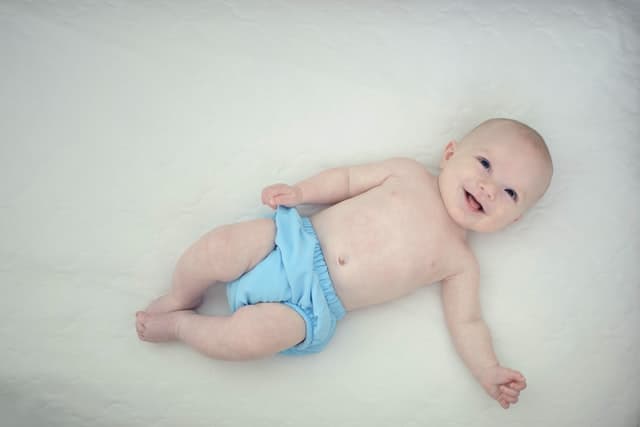There are many glamorous things about space travel that people worldwide have been dreaming about for millennia. While most have been dreaming about seeing unfiltered space, many people have had sleepless nights trying to find a way to do the one natural thing every human does. Going to the toilet has been a problem since the first mammal was sent into space.
Astronauts wear diapers when stuck in their spacesuits for 8 to 10 hours while on an EVA, during launch, and landing. The time required to take a spacesuit off to go to the bathroom would cause more problems than wearing a diaper. Modern astronauts wear commercial off the shelf adult diapers after many interesting attempts in the past.
The modern approach of adult diapers follows many trials and errors that have led to the systems. Often, the diapers may only ever be used for the launchpad instead of on the actual trip. With launches being delayed, astronauts can be left for hours on end without going to the bathroom.
What do they do with the waste diapers?
While astronauts are waiting to launch, there may not be anything they can do with the diapers they are currently wearing. However, once they reach space, the same disposal system used for feces is used to dispose of the diapers.
Human waste like feces and diapers are saved for the next waste returned mission from the space station. You do not want to add a dirty diaper to the estimated 23,000 pieces of orbital debris greater than 10cm. Urine usually is recycled through a lengthy process to deliver clean water.
The process of getting rid of diapers is a simple one, and over the years as technology has advanced to reduce the use of them in most situations. However, there were no toilets on the spaceships in the early days of the first lunar mission.
When did they start using the diapers?
Diapers have been in use on space trips since almost the very first mammals traveled through space. The last thing anyone wants in zero gravity is a bag of urine, loose feces, or soiled diapers to be floating around a sealed zero gravity compartment.
This would not only be unsanitary but also pose a hazard to sensitize equipment as well as the air purification systems.
On one particular moon trip, a piece of feces accidentally escaped, and astronauts could be heard on the radio looking for a napkin to catch it. On some earlier flights in 1961, astronauts scheduled for only a few brief minutes in space were forced to soil themselves and their suits when delays caused hours of waiting.
This all led to NASA and most other space agencies requiring astronauts to wear diapers when they launch. Spacewalks later adopted diapers as a safer way to dispose of the waste that humans naturally make while working.
What do they do when not in the spacesuit?
While in space suits, most astronauts will try to hold it or give in and use the diaper. The same cannot be said for when they are outside the spacesuit. Early astronauts used plastic baggies to capture their waste. They were forced to have a pile of waste build up over time.
However, when the ISS was created, this was no longer suitable, and a rudimentary waste system was designed. This system froze then disposed of the contents. This was then put in the supply shuttles, filled with trash, and then launched to burn up in the earth’s atmosphere.
Modern space toilets use a combination of vacuums and better-aimed disposal techniques to get rid of fecal matter. However, the urine produced is filtered through an intense system that eventually delivers clean and drinkable water that can be used throughout the station, which saves a lot of water.
How have space toilets changed through the ages?
The International Space Station’s current toilets are a lot more modern than the older toilet technology and more user friendly. Sometimes, even astronauts in space fail to consider the advances in technology that have been made for our disposal of waste.
The first ships in space had nothing, the moon landings had nothing good, and modern systems are still being improved upon almost daily.
First men in space
Yuri Gagarin was the first-ever human being in space, his predecessors being a few monkeys and many good dogs. When he eventually launched for his few hour-long trips, there was barely enough room in his pod for another screen.
This meant that there was no way for him to stand up or move about, which unfortunately meant that he was forced to wear a diaper for his entire trip. We may never fully know how much waste he disposed of while in space, but we know that he paved the road for space travel forever.
Moon Landing Baggies
By the time 1969 rolled around, many new technologies were being used, and the waste disposal system used had advanced slightly. The capsules had a lot more space, and astronauts could find some privacy if needed; however, this did not mean they had full toilets to use.
Most moon landing missions relied on plastic baggies for the astronauts to use for urine and fecal matter. The baggies would be frozen and then kept in containment until the mission was over, and the crew could safely use typical facilities.
This caused many problems as it was never foolproof, and on at least one well-known occasion, some of the fecal matter escaped.
Modern Waste Disposal
As technology improved and more extended missions were undertaken on the ISS, disposing of human waste became a vital part of any space mission. In modern waste systems, the toilet has a vacuum and straps to hold down any gender astronaut.
However, this is not the ultimate solution. It is just the most current one being used, with NASA actively looking for a new system in 2017. With the announcement that NASA is planning on sending more people to the moon soon, it has become relevant again.
NASA has released a list of requirements and made it open for the public to join in on the competition to create the next space toilet. This means that we may see even stranger and much more effective toilets used in the space station in the future.
What are the dangers of not having a proper waste system?
The main danger of not having a proper waste system is damaging system sensitive components, health concerns from human waste, and making the work environment pleasant.
Further, owing to the small space and the limited ability to keep things clean, having a broken waste system could mean that the people in the space station or ship could get seriously sick.
The dangers of human waste on earth are triple-fold in space. They should never be underestimated, with engineers constantly working on finding ways of creating better systems that more efficiently dispose of it.
Conclusion
Diapers have been used on almost every human-crewed space flight that has left the earth and will continue to be used in some capacity. They are effective at what they do, and no one should ever underestimate how effective they control the waste humans create.
Just be sure that if you are ever in space that you are right-sized diaper, no one wants to have an accident while in a spacesuit.

